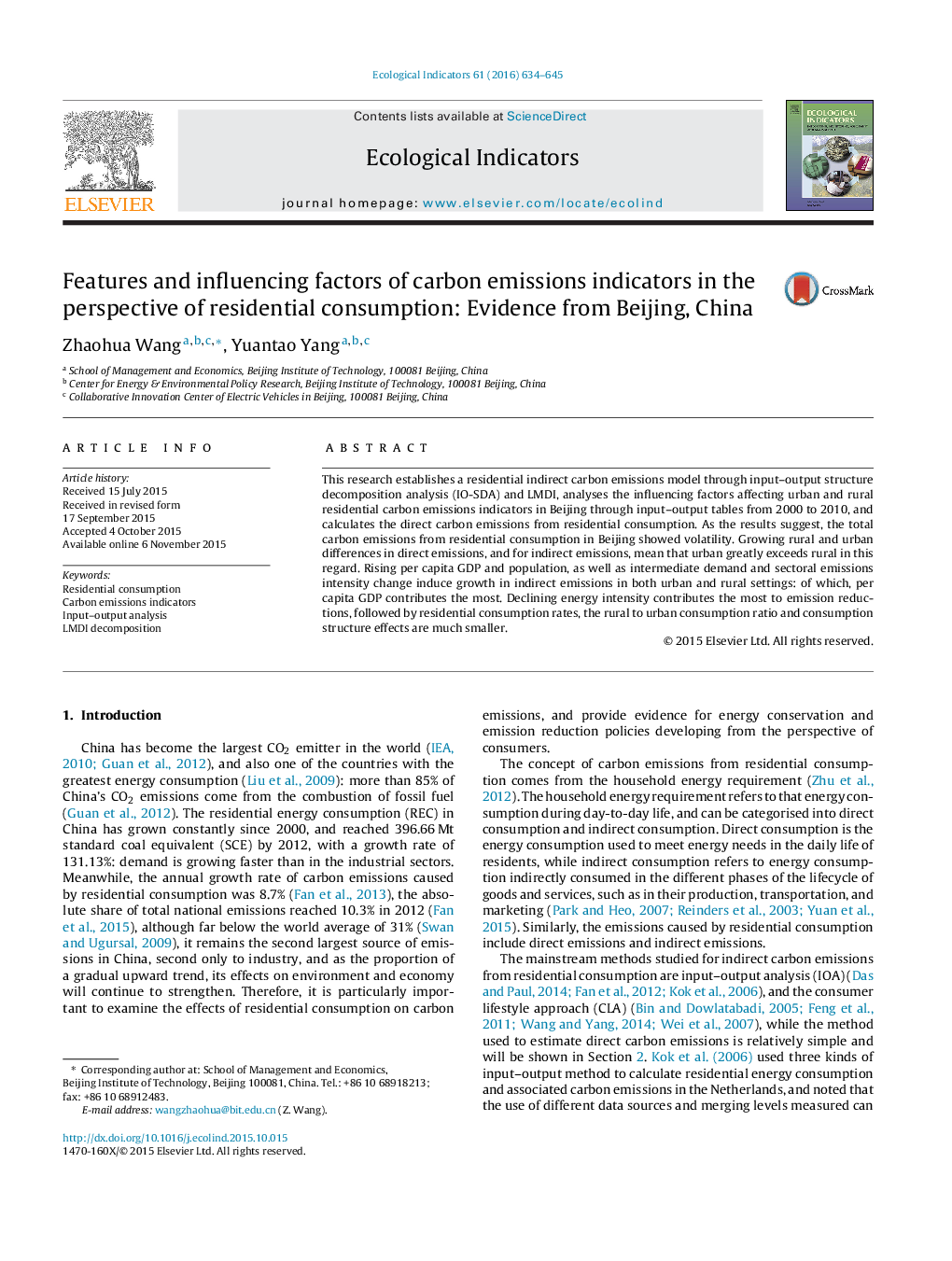| Article ID | Journal | Published Year | Pages | File Type |
|---|---|---|---|---|
| 6293676 | Ecological Indicators | 2016 | 12 Pages |
Abstract
This research establishes a residential indirect carbon emissions model through input-output structure decomposition analysis (IO-SDA) and LMDI, analyses the influencing factors affecting urban and rural residential carbon emissions indicators in Beijing through input-output tables from 2000 to 2010, and calculates the direct carbon emissions from residential consumption. As the results suggest, the total carbon emissions from residential consumption in Beijing showed volatility. Growing rural and urban differences in direct emissions, and for indirect emissions, mean that urban greatly exceeds rural in this regard. Rising per capita GDP and population, as well as intermediate demand and sectoral emissions intensity change induce growth in indirect emissions in both urban and rural settings: of which, per capita GDP contributes the most. Declining energy intensity contributes the most to emission reductions, followed by residential consumption rates, the rural to urban consumption ratio and consumption structure effects are much smaller.
Related Topics
Life Sciences
Agricultural and Biological Sciences
Ecology, Evolution, Behavior and Systematics
Authors
Zhaohua Wang, Yuantao Yang,
